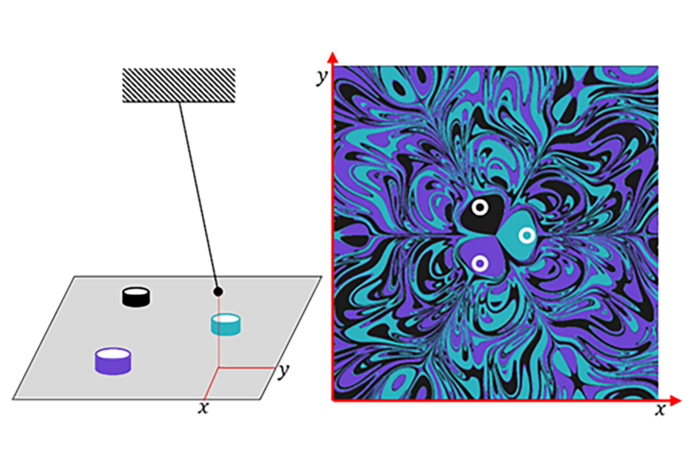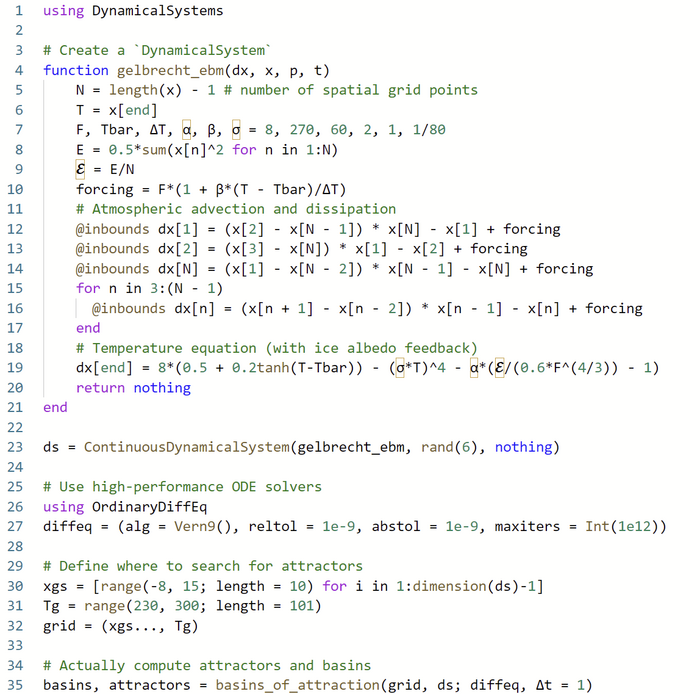Finding attractors of dynamical systems via recurrences

Conceptual models describing, for example, the dynamics of physical, biological, chemical or even social systems can be represented in a compact form by so-called 'dynamical systems' using differential equations. Most of these models feature multistability, meaning that the model has several different long-term states (formally called attractors). In which of these attractors the model ends up to depends uniquely on its initial condition. For multistable systems it is therefore important to be able to both identify all attractors in the system, but also map which initial conditions end up to which attractor (formally called the basin of attraction). Datseris and Wagemakers created an algorithm that can find the attractors and their basins for any dynamical system. Ground breaking about this work is that it only requires the defining equations of the dynamical system. The implementation of the method was published directly as part of an internationally acclaimed software library for dynamical systems, allowing scientist to utilize this algorithm using only 10 lines of code.
which only means that the planetary albedo decreases with temperature, being 0.7 at -20°C and 0.3 at 0°C. This model only has a single variable, and hence it is rather straightforward to identify its attractors and their basins. If the model starts with an initial temperature less than 250K, it will always converge to final temperature of 230K (snowball Earth). If the initial temperature is above 250K, the model will always converge to 288K (today). Of course, reality is much more complicated. For example, Gelbrecht et. al. (2021) expanded the model above to also include a spatial component of atmospheric advection and dissipation. In this case, it is much harder to estimate “by hand” what are the attractors of the system, and practically impossible to estimate their basins.
This is where the method of Datseris and Wagemakers comes into play, and can automate the process. The method makes use of one of the most fundamental statements in dynamical systems theory: the Poincaré recurrence theorem. It states, that, while on an attractor, the system will sooner or later return to the position it was some time ago. Then the method finds these recurrences, and with some further internal logic, it identifies attractors and their basins.
As the method is available as open source, here is an example of how one would compute the attractors and their basins for the system of Gelbrecht et. al. (2021) using the following Julia language code snippet:
Original publication:
Datseris, G. and A. Wagemakers (2022) Effortless estimation of basins of attractions. Chaos 32. https://doi.org/10.1063/5.0076568
Reference:
Gelbrecht, M., Lucarini, V., Boers, N. et al. (2021) Analysis of a bistable climate toy model with physics-based machine learning methods. Eur. Phys. J. Spec. Top. 230, 3121–3131 (2021). doi.org/10.1140/epjs/s11734-021-00175-0
Contact:
Dr. George Datseris
Max Planck Institute for Meteorology
Email: george.datseris@mpimet.mpg.de


